This series explains various aspects of Japan's ski resorts from various perspectives in order to get to know them in more detail. In the first part, let's take a closer look at the "snow vehicles" that are indispensable for the operation of ski resorts and the development of slopes.
Text/Daisuke Mizorogi
Editing/STEEP Editorial Department Edit/STEEP
A car that works on the slopes that you often see
There are two main types of cars that work on the slopes.
For those of us who love to ski, it makes us happy when it makes a loud thumping noise. And the other is a car "snow transporter" that makes you want to ski powder on cat skis when you see it. Its main purpose is to transport personnel and goods. An example of this is the caterpillar-equipped courier truck that runs through the inn districts of the snow country.
▶Snow groomer
Although the name differs depending on the manufacturer, the main purpose is to maintain the slopes such as compacted snow. In the 2000s, high-tech technology such as control systems progressed.

▶Snow truck
A vehicle whose primary purpose is to carry people or goods. Works well outside the slopes. In the case of specifications that can run on public roads, a driver's license is required.
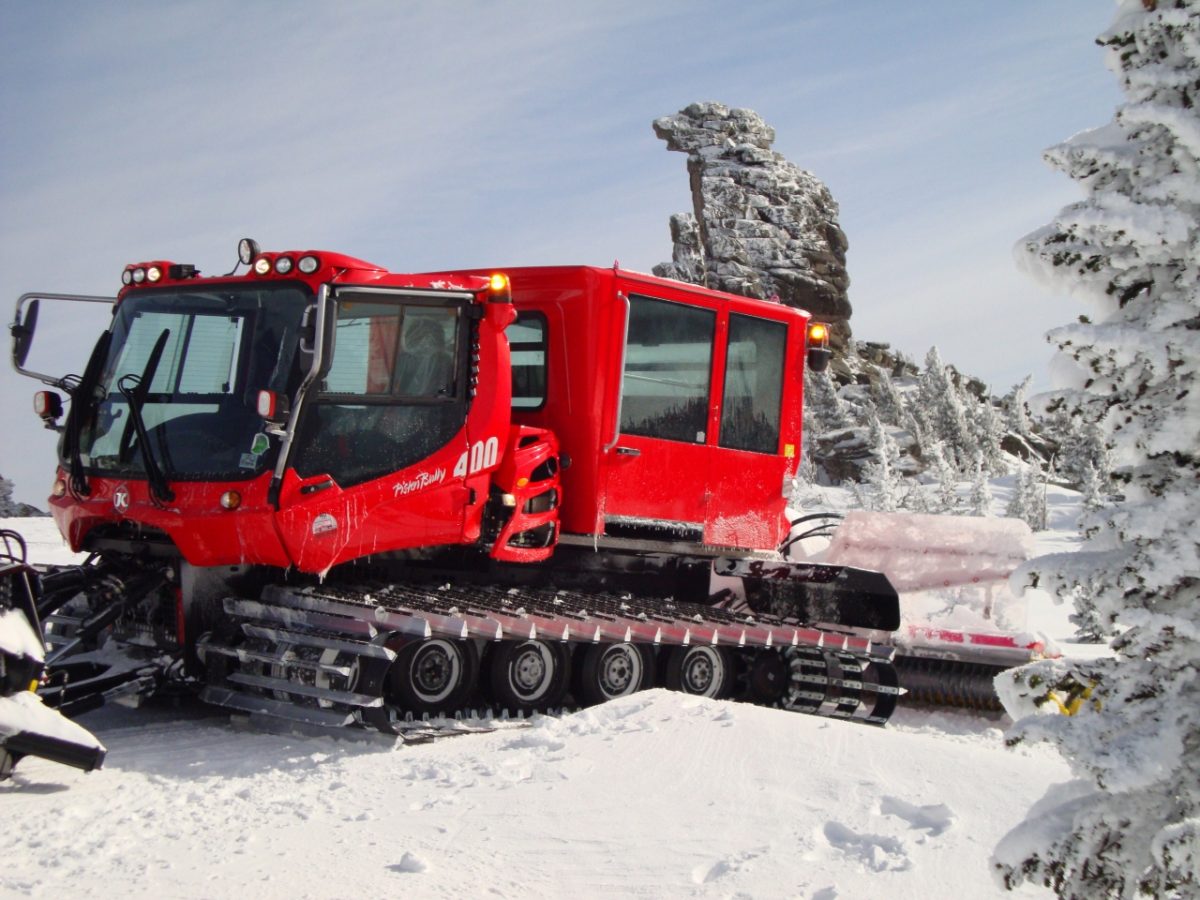
We often refer to compacting snow as ``pisten'', but ``pisten'' is German for ``slope''.
The name of the German snow groomer brand "Pistenbully" means "bully" (to tease) the slope, which is really interesting. In other words, the more work you do, the more you bully the slope. Watch the video to see how it works.
Snow groomer - Pisten Bully 400
In Japan, snowmobiles from Germany, Italy, and domestic manufacturers are the mainstream
Currently, the Pistenbully has the top share of the global market for snow groomers, followed by the Italian Prinaut. "Prinote" has two lines, European and North American, by acquiring the Canadian brand. In the past, there were more manufacturers, but after industry reorganization, it is now the two strongest era.
▶ Pistenbully (Germany)
A brand of Germany's Caseborer, the market leader with a global market share of over 65%. A red body like fire is symbolic. Debuted in Japan at the 1972 Sapporo Olympics.
▶ Prinote (Italy)
Boasts a high market share in Europe and the United States. It was also used at the Sochi Olympics. It is also highly rated for its high design, such as being handled by Ferrari designers.
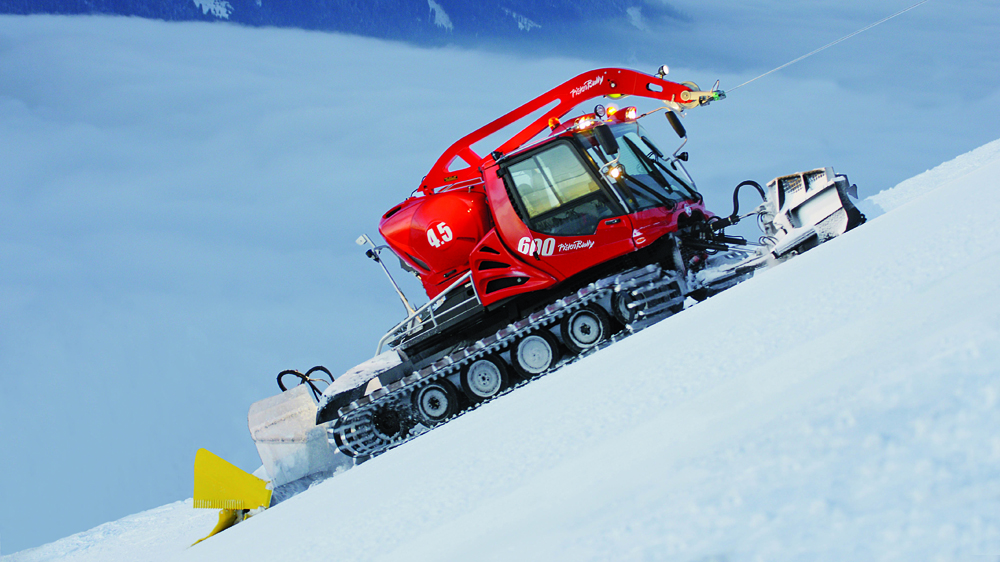

▶ Ohara Iron Works (Japan)
With a long history of more than 100 years, it is a domestic brand that boasts a major force in Japan. Received high acclaim for product development and maintenance systems suited to Japan's unique natural environment.
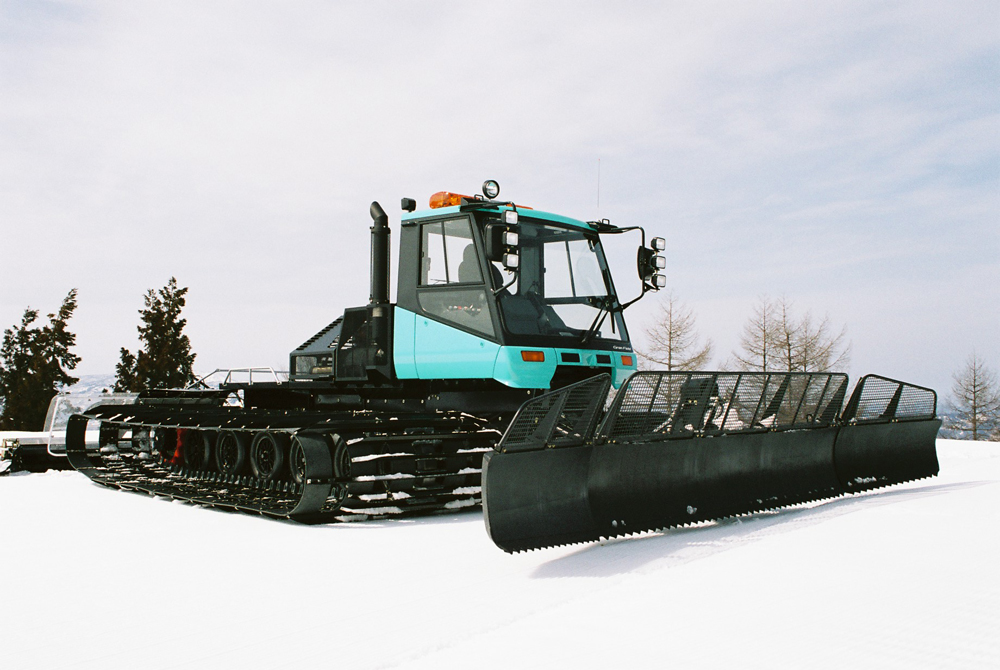
▶Nippon Snow Thrower (Japan)
A snowplow manufacturer in Sapporo. Currently, we are selling a model called "TT300" that fully incorporates the various needs of snow compactors.
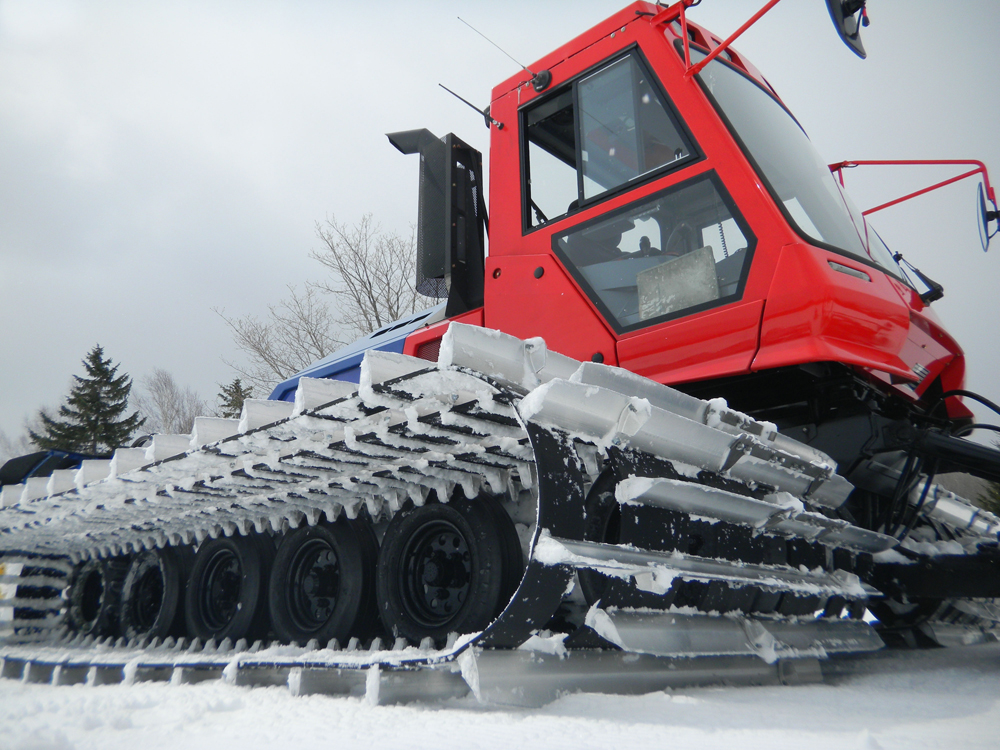
The structure of the snow compactor is like this
What kind of structure does the snow compactor have and what principle does it use to compact snow? Let me give you an overview of it. However, there are some differences in the structure and principle depending on the manufacturer, and the names of the parts are also different. But the gist of it is the same.
Here, let's take Ohara Iron Works' DF430 as an example, and simply explain the structure and operating principle of a snow groomer.
Knowing the structure and principle, the snow groomer is an interesting and fun car. Makes me want to drive for a while. Regarding driving, if you run on public roads, you need a license plate and a large special license, but you do not need a license to run on private land.
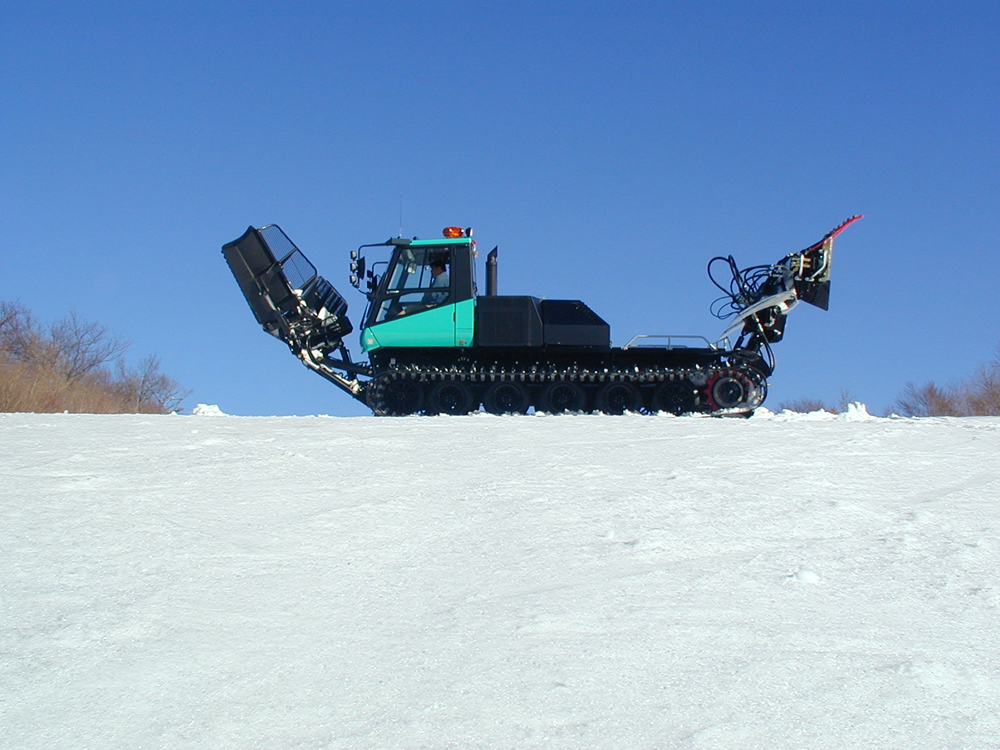
▶Blade
Push the snow out like a bulldozer and crush it. A movable board that pushes snow on the ground forward and powerfully pushes it forward. Equipped on the front of the vehicle. Currently, the mainstream is a three-part shape that moves more three-dimensionally. In recent years, there are also models with a large range of motion and flexibility for building parks.
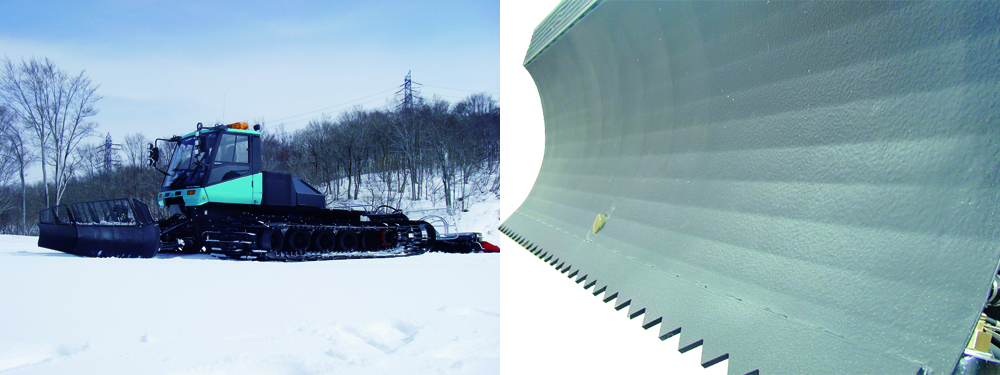
▶ Track (Ritai)
The underbody has two main roles.
There are names such as crawlers, track belts, and endless tracks.
"Catapira" in Ohara. Versatility and toughness to handle various snow conditions, and ingenuity to prevent weight are required. Not only does it move back and forth, but it also serves to crush the snow on the ground at the same time.
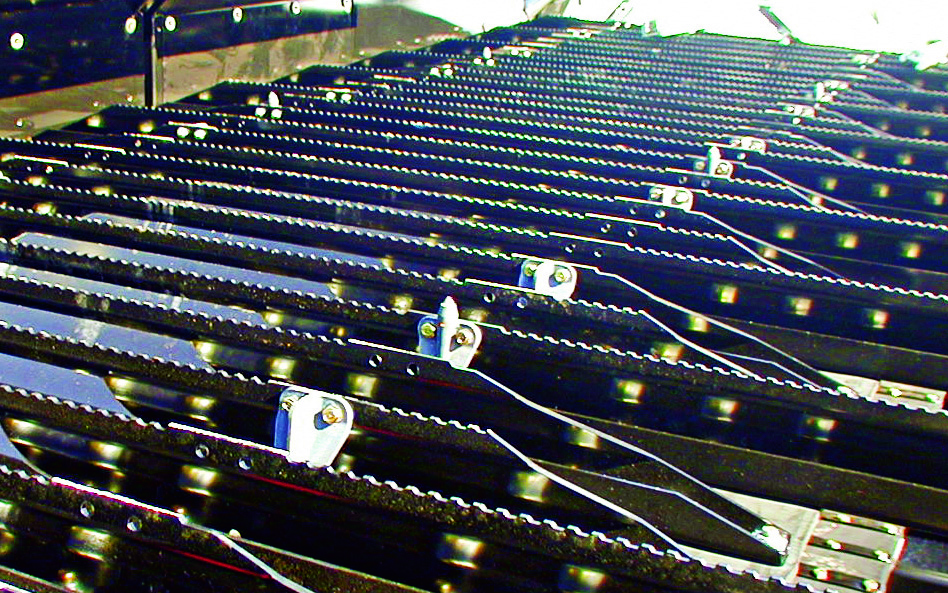
▶Mill & Finisher
This section does the finishing work. Mills are also called “tillers”, and in Ohara they are called “compressed snow rotors”. As it rotates, it agitates the snow. Then, after putting pressure on it, I draw a beautiful corduroy. In general, it is suitable to divide into two, and in the case of park specifications, it is suitable to divide into three.

The inner mill (left) stirs the snow and the finisher (right) creates grooves. The structure of the mill varies depending on the manufacturer
▶Engine
Today's snow vehicles use diesel engines. For example, Ohara uses Caterpillar, and Prinaut uses Mercedes and other powerful engines from European and American manufacturers. The source of the power is often made in Europe and the United States.
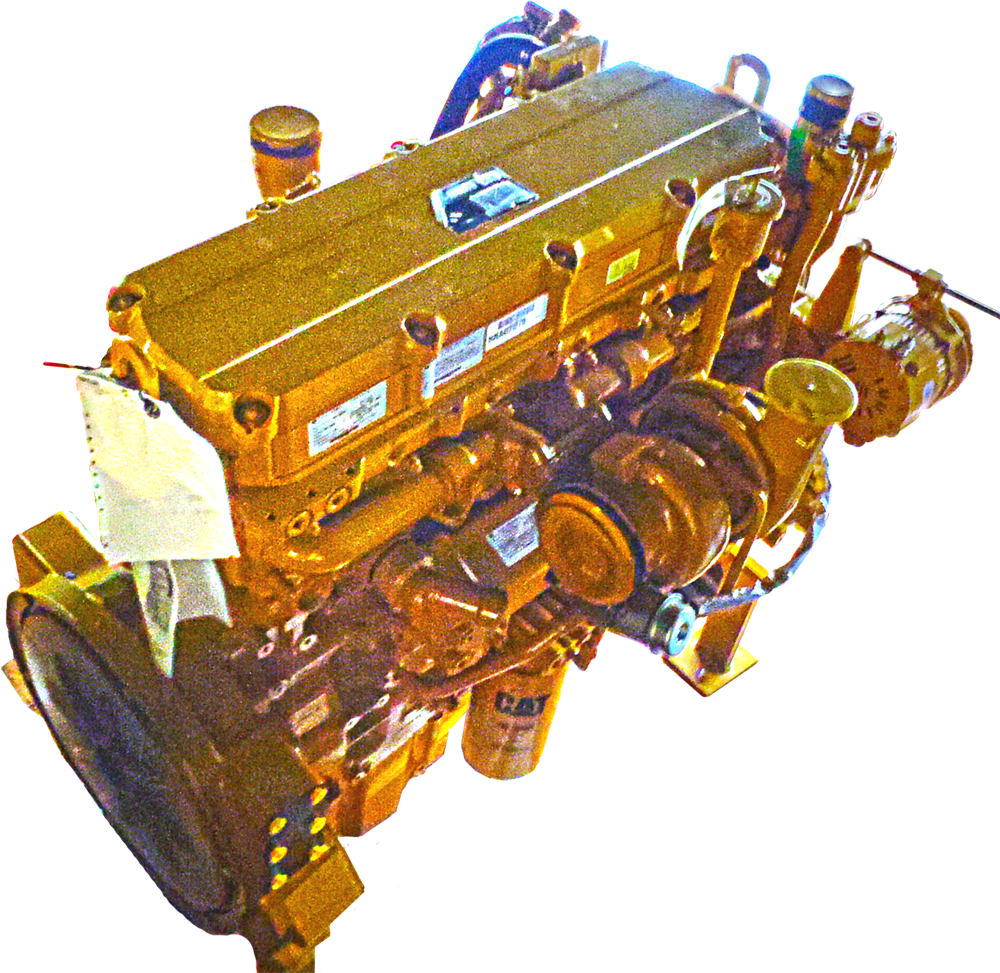
DF430 is equipped with high-performance "CAT C13"
▶Operating room
About the cockpit. Also called a "cabin". It mainly consists of a seat that is comfortable to sit on for long hours without fatigue, and a cockpit that aims for easy operation. Cockpits have become more digital in recent years. In addition, sufficient consideration has been given to ensure that work can be done safely. It is a combination of comfort and safety.

This is how the snow groomer works
Now that you know the names and structures of the parts, let's take a look at how the snow groomer works.

(1) First, the front blades break up bumps and snow masses, then move forward while pushing
them out.
Tracks are not just for moving. ③ And the mill at the rear stirs the snow finely at the end.
④ Then, the finisher draws Corduroy on the snow while applying pressure.
That's the flow. It will be easier to understand if you compare it with the visual.
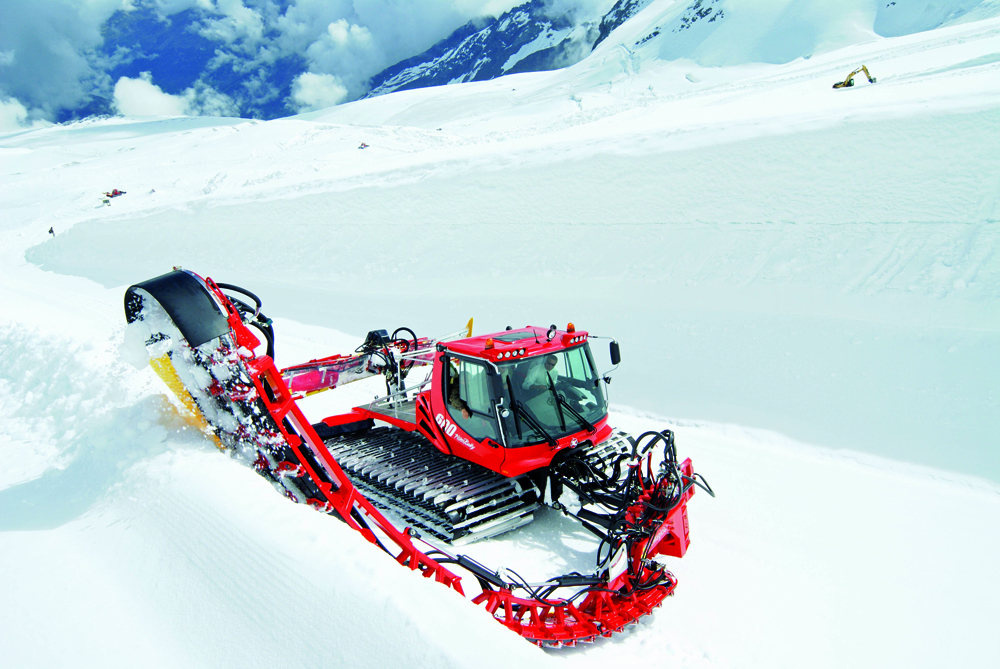
Numerous "arene" techniques that attachments enable
Today's snow vehicles are becoming increasingly high-tech and multi-functional. Models with excellent functions for building snow parks, models with winches, etc. By adding attachments, he is active in a more professional and efficient way of working. Let's start with the Pistenbully attachment.
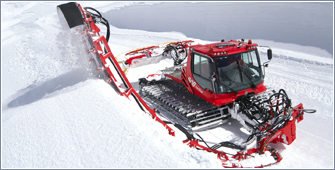
pipe magician
A dedicated implement for maintenance of half pipes (work machine). Clean the R part of the pipe. By reversing left and right, it is possible to work either up or down.

track setter
It is attached to the rear part and two grooves are made. Develop cross-country ski courses that comply with FIS (International Ski Federation) regulations.

passenger cabin
Widely used for transporting people and equipment. When using for cat skiing, it is comfortable to have a cabin. It would be even better if a chair was provided. Since it is attached with bolts, it is actually easy to put on and take off.

bush cutter
If you install a rubber summer track (caterpillar part) and a bush cutter, you can also use it for slope maintenance in the summer. Leave the mowing work on the slopes to us speedily.
How much does such a great snowmobile cost?
I understand the snowmobile's ability to do a good job, but how much does it cost? It is said that the price will change greatly depending on the attachment, but it is roughly like this.
36 million yen to 40 million yen per unit!
(Medium size snow vehicle) you compare it with other cars...
Ferrari (supercar) about 40 million yen -
Crane truck (40t) about 40 million yen -
Dump truck (medium size) about 12 million yen -
Attach attachment here and the price has increased significantly.
In particular, the attachments that are essential for creating and maintaining half pipes cost about 15 to 20 million yen. It's expensive, but the performance seems to make sense. Check out this video. (The pipe work scene starts around 1:10)
PistenBully |ESPN Winter X-Games Aspen,CO,2020
A spectacular performance!
That's how snowmobiles work at that ESPN Winter X-Games. Both the Super Pipe and the Slope Style are like groomers. The more you know, the more interesting the snowmobile. Please look forward to the second
[Writer Profile] Daisuke Mizorogi
Has been involved in skiing for over 20 years as a member of the BRAVOSKI editorial staff. He has been covering moguls since the 1990s and has extensive experience in the field of ski resort guides. On the other hand, he has created many unconventional projects that are not found in existing ski magazines, combining subculture and skiing. Currently, while bearing the title of "Showa culture researcher", he writes and edits in various genres other than skiing. He stands in the most indoor position in the outdoor world and the most outdoor position in the indoor world.
<Interview/photo cooperation>
Ohara Iron Works , Snow Systems Co. , Ltd., Northwest (in alphabetical order)

